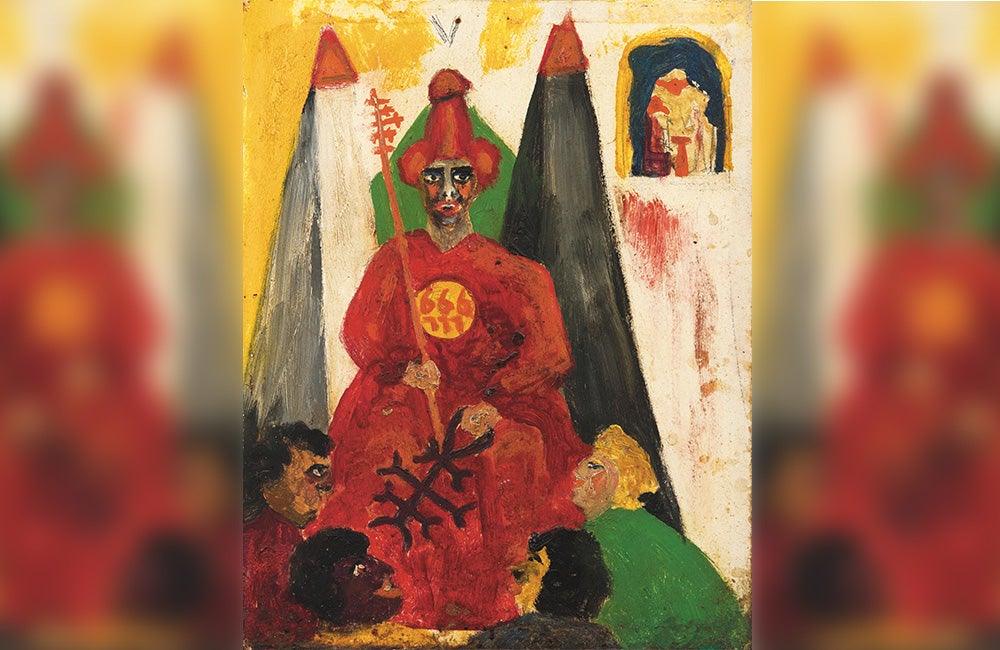First published: Summer 2015
The British-born occultist, ceremonial magician, poet and painter Aleister Crowley (1875–1947) has never been as well known for his artistic pursuits as for his more esoteric interests, for which he was dubbed the “wickedest man in the world” by the British tabloids. Based on diaries, photographs and catalogues, it is believed that Crowley produced some 300 works of art, only a fraction of which have survived. While he was alive, only one major exhibition of his art was presented, in 1931, in Berlin. It featured 73 works. Over the past decade, several exhibitions of Crowley’s art have taken place in Paris, London and Venice, and in Australia. Together, they have prompted some serious reappraisal of his art.
 Landscape with Coral and Jade Pagodas, 1920, oil on canvas, 23.4 x 35 in., 59.5 x 89 cm
Landscape with Coral and Jade Pagodas, 1920, oil on canvas, 23.4 x 35 in., 59.5 x 89 cm
Crowley’s significance as an artist lies in his reconsideration of art as a central component in his magical theory of the universe and, in particular, its ability to awaken, as he put it, “our Secret Self – our Subconscious Ego, whose magical Image is our individuality expressed in mental and bodily form”.
Brought up in England’s West Midlands region, where his well-to-do family followed the Plymouth Brethren, Crowley’s first understanding was that painting was a form of moralist decoration and, despite his mother and aunt having been painters, he was left feeling, as he wrote in his diary, “ignorant of the existence of anything of the sort beyond Landseer’s Dignity and Impudence.” (Sir Edwin Henry Landseer was a nineteenth-century painter known for his pictures of animals and his sculptures of lions in London’s Trafalgar Square).
In 1898, while studying at Cambridge University, Crowley met graduate Gerald Kelly who shared his interests in magic and writing, and would influence his development. For Crowley, art was not about replicating observed subjects but about expression. He noted, “one should not paint ‘Nature’ at all; one should paint the Will.”
This is an article extract; read the full article in Raw Vision #86




